
Feel free to add tags, names, dates or anything you are looking for


Shalva Kikodze’s emergence on the Georgian art scene was comparable to a meteoric phenomenon. The duration of his creative activity spans just fourteen years. In 1908, at the age of 14, his first caricature was published in the Georgian humorous magazine "The Devil's Whip." His final work appeared in October 1921 during an exhibition at "La Licorne" Gallery in Paris, featuring works by three Georgian artists — Lado Gudiashvili, Davit Kakabadze, and Shalva Kikodze. It was at this exhibition that a Spanish woman commissioned Shalva Kikodze to paint his own self-portrait. Unfortunately, only a photograph of this portrait has been preserved. With the funds provided by the client and his own personal savings, Shalva Kikodze left for Germany. Unfortunately, the talented 27-year-old Georgian artist passed away in a Freiburg clinic, succumbing to an incurable illness that was prevalent at the time.
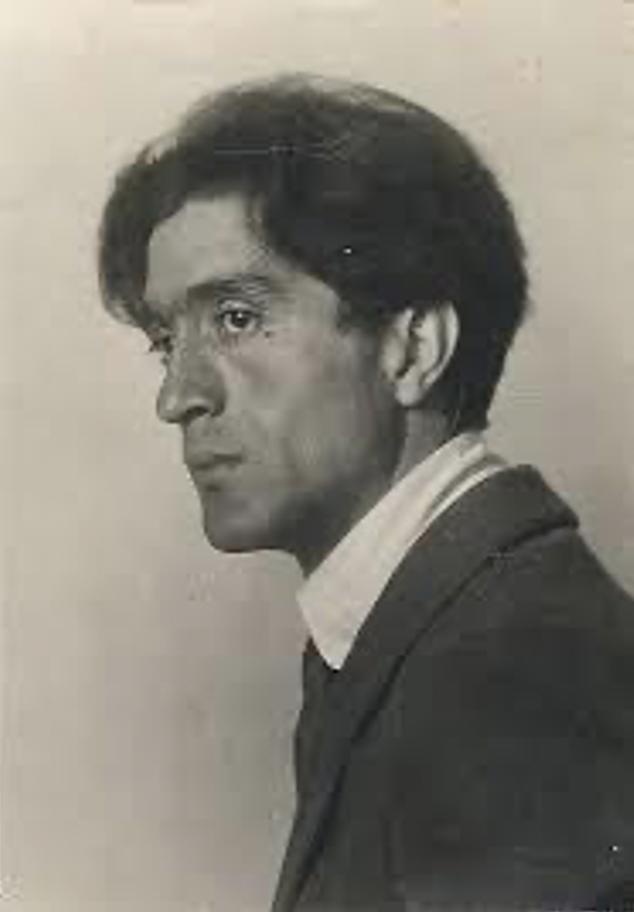
Shalva Kikodze, 1920, photograph

Photo of ‘Pictorial Portrait of a Spanish Woman’ (the original is lost), 1921
Shalva Kikodze was born in the village of Bakhvi (Ozurgeti region) in 1895. Soon afterwards the family moved to Tbilisi, where Shalva Kikodze enrolled as a pupil at the Tbilisi Preparatory School for Georgian Nobility. Alongside his academic pursuits, he showed a significant interest in painting.
“It can be said that Shalva Kikodze started painting at the same time as he began speaking. Everything that could impress a child brought up in such a patriarchal environment, he drew with a pencil. He was only three years old when his right hand became paralyzed and he had to draw with his left hand” recalled the artist's cousin, the renowned writer and critic, Geronti Kikodze.
Shalva Kikodze's early works encompassed more than just caricature sketches that were time and again published in Georgian humorous magazines and newspapers. Most notably, he contributed illustrations to Leo Kiacheli's stories such as "Friends" and "Dream Stone," as well as folk epics like "Amirani" and Alexander Kazbegi's narrative "Khevisberi Gocha."

Shalva Kikodze’s illustration for Leo Kiachelis’s story “Friends” (vignette). Paper and drawing ink. 12x17. 1917, published in 1920
Shalva Kikodze’s illustration for Leo Kiachelis’s story “Dream Stone” (vignette). Drawing ink on paper, 13x15. 1917, published in 1920,

Shalva Kikodze. Alexander Kazbegi “Khevisberi Gocha” (illustration). Pencil on paper. 26x23. 1913. Georgian National Museum

Shalva Kikodze. Cover of the folk epic “Amirani”. Drawing ink on paper. Collected and published by Petre Mirianashvili, Tbilisi 1912-1913, with 30 illustrations by Shalva Kikodze
Between 1914 and 1917, Shalva Kikodze pursued his higher education studies in Moscow. Initially enrolling in the Faculty of Law at Moscow State University, he later transferred to the Moscow School of Painting, Sculpture and Architecture, where he focused on the study of painting. During this period, the artist produced several self-portraits using both oil paints and graphic techniques.
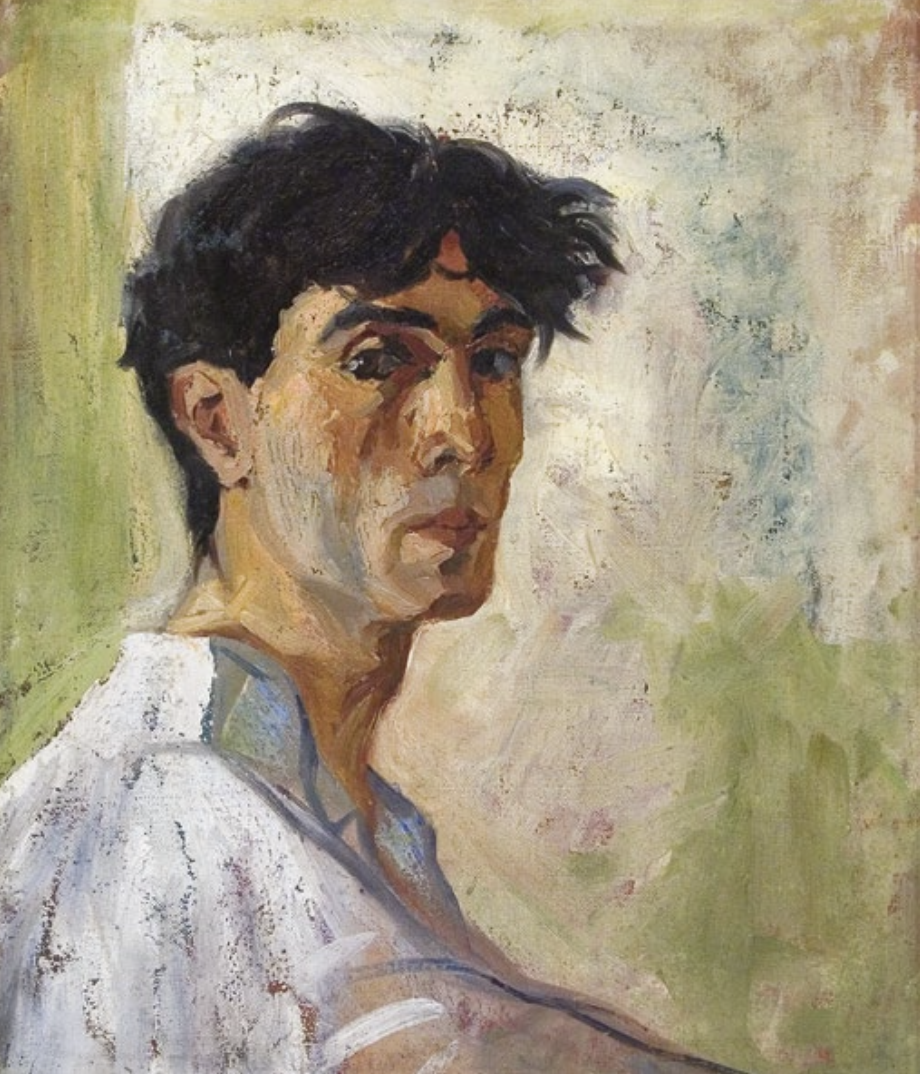
Shalva Kikodze Self-Portrait. 64x44. Oil on canvas. 1920. Georgian National Museum

Shalva Kikodze. Self-Portrait with a Mustache. 40x35. Oil on canvas. 1918. Private collection

Shalva Kikodze. Self-Portrait with a White Cap. 20.5 x 26.5. Oil on canvas. Private collection

Shalva Kikodze. Self-Portrait. 23x17. Pencil on paper.1914. Georgian National Museum

Shalva Kikodze. Self-Portrait.25x16. Pencil on paper. 1915. Private collection
Shalva Kikodze. Self-Portrait. 24x22. Pencil and drawing ink on paper. 1919. Private collection
It is worth noting that while studying in Moscow, the artist worked on graphic illustrations and caricatures for the editorial staff of the magazine "Rampa i Zhizn" (Footlights and Life), as well as Nikita Balieff's Cabaret Theatre "The Bat."

Shalva Kikodze. Stage Director of the Moscow Drama Theater, K. Zagarov, Amicable Gesture, 1916, “Rampa i Zhizn" (Footlights and Life) magazine, Moscow; signed with the pseudonym Chalico
Shalva Kikodze. Musician S. Koussevitzky, Amicable Gesture, 1916, “Rampa i Zhizn" (Footlights and Life) magazine, Moscow; signed with the pseudonym Chalico
Shalva Kikodze. Actor A. Vertinsky, Amicable Gesture, 1916, “Rampa i Zhizn" (Footlights and Life) magazine, Moscow; signed with the pseudonym Chalico
Shalva Kikodze. Actor I. Yuzhny, Amicable Gesture, 1916, “Rampa i Zhizn" (Footlights and Life)magazine, Moscow; signed with the pseudonym Chalico
In 1916, while on summer vacation in his homeland, the artist attended the historic "Georgian Society of Artists" session founded by Dimitri Shevardnadze, to which the self-taught artist Niko Pirosmani was also invited. Shalva Kikodze instantaneously sketched the latter’s portrait.

Shalva Kikodze. Niko Pirosmanashvili. 5x6. Pencil on paper. 1916. Georgian National Museum
The artist spent a lot of time traveling through Georgia, sketching the landscapes he observed. Portraits of his relatives also date from this period.
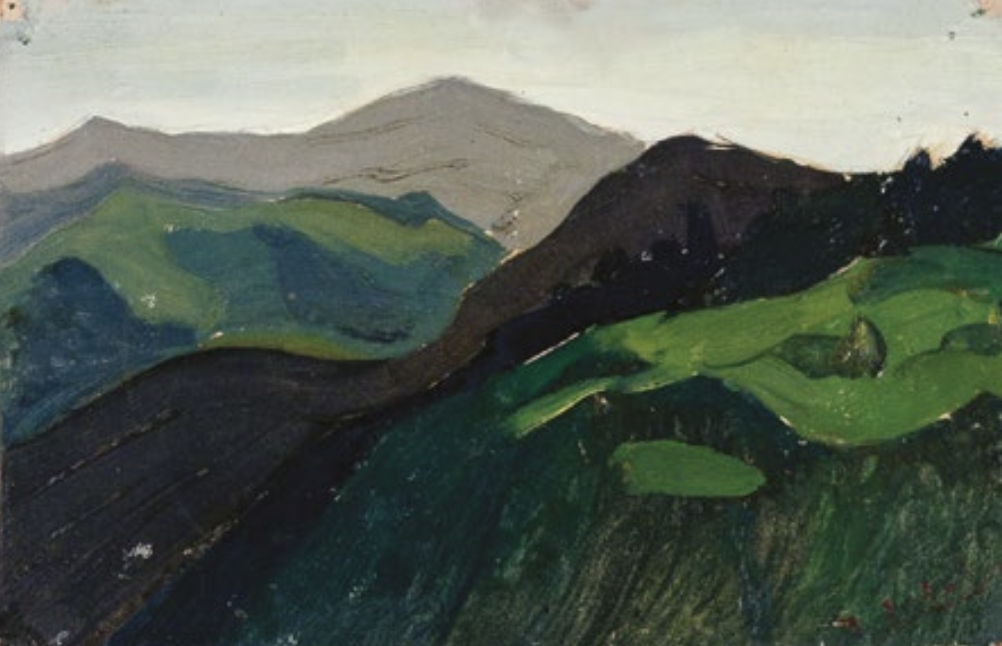
Shalva Kikodze. Adjara, Khulo. 26x17. Oil on cardboard. 1919. Museum of Fine Arts

Shalva Kikodze. Portrait of the Artist's Sister - Aneta. 35x27. Oil on canvas. 1919. Private collection
In the Garden (Aneta and Gerasime Kikodze). 22x16.5. Oil on cardboard. 1919. Private collection

Shalva Kikodze. K. Makharadze’s Portrait. 102x42. Oil on canvas. 1919. Georgian National Museum

Shalva Kikodze. Portrait of Cleopatra Jashi. 25.5x24.5. Oil on canvas. 1919. Georgian National Museum
Shalva Kikodze's graphic sketches that depict political figures and amicable gestures associated with the years of Georgia's restoration of state independence are of particular historical significance. These illustrations portray the participants of the Transcaucasian Seim, the constitutional assembly of Georgia, and the leaders of the Menshevik government.
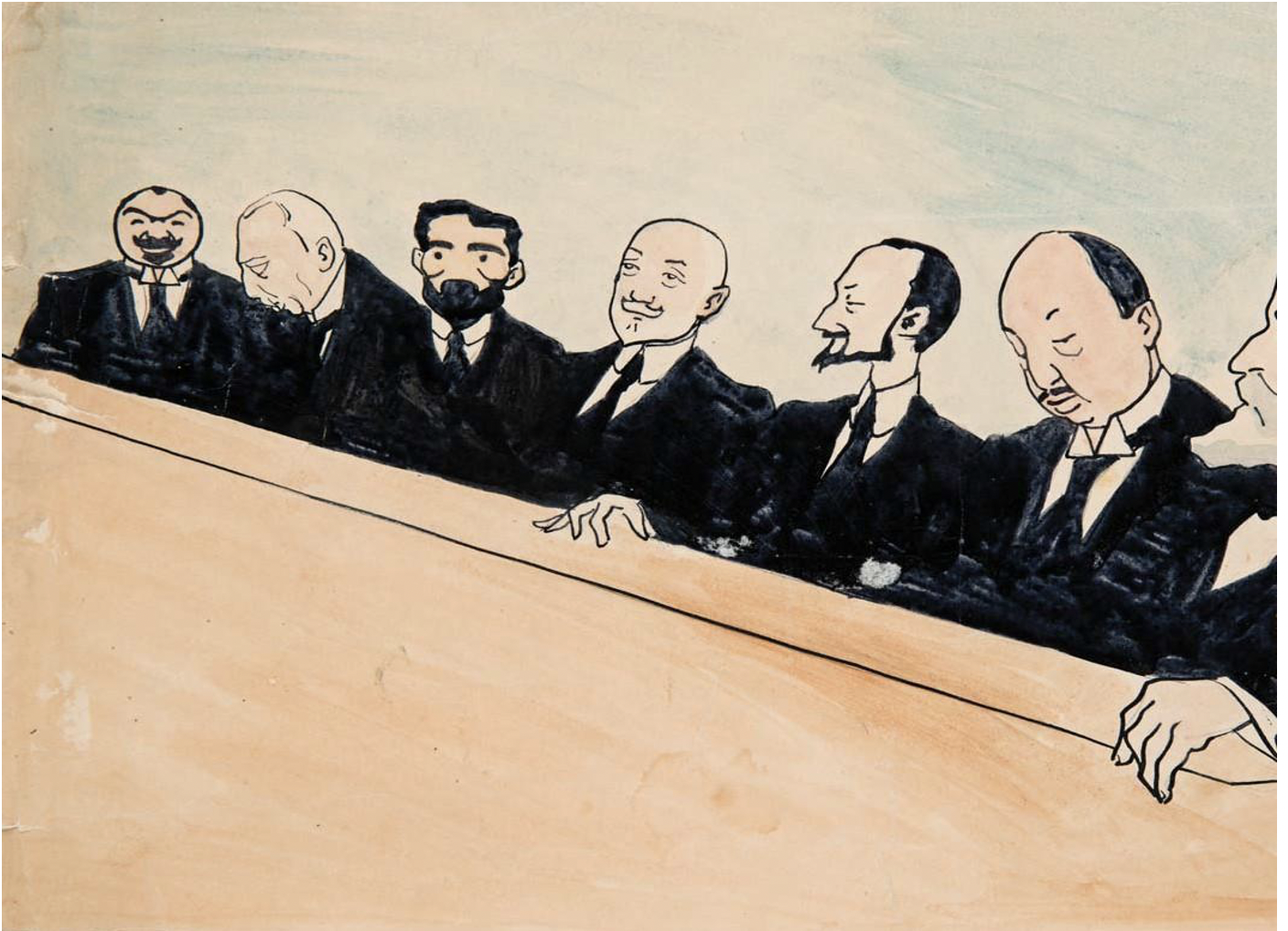
Shalva Kikodze. Transcaucasian Seim participants. 27.5 x 21.5. Drawing ink on paper. 1918. Private collection
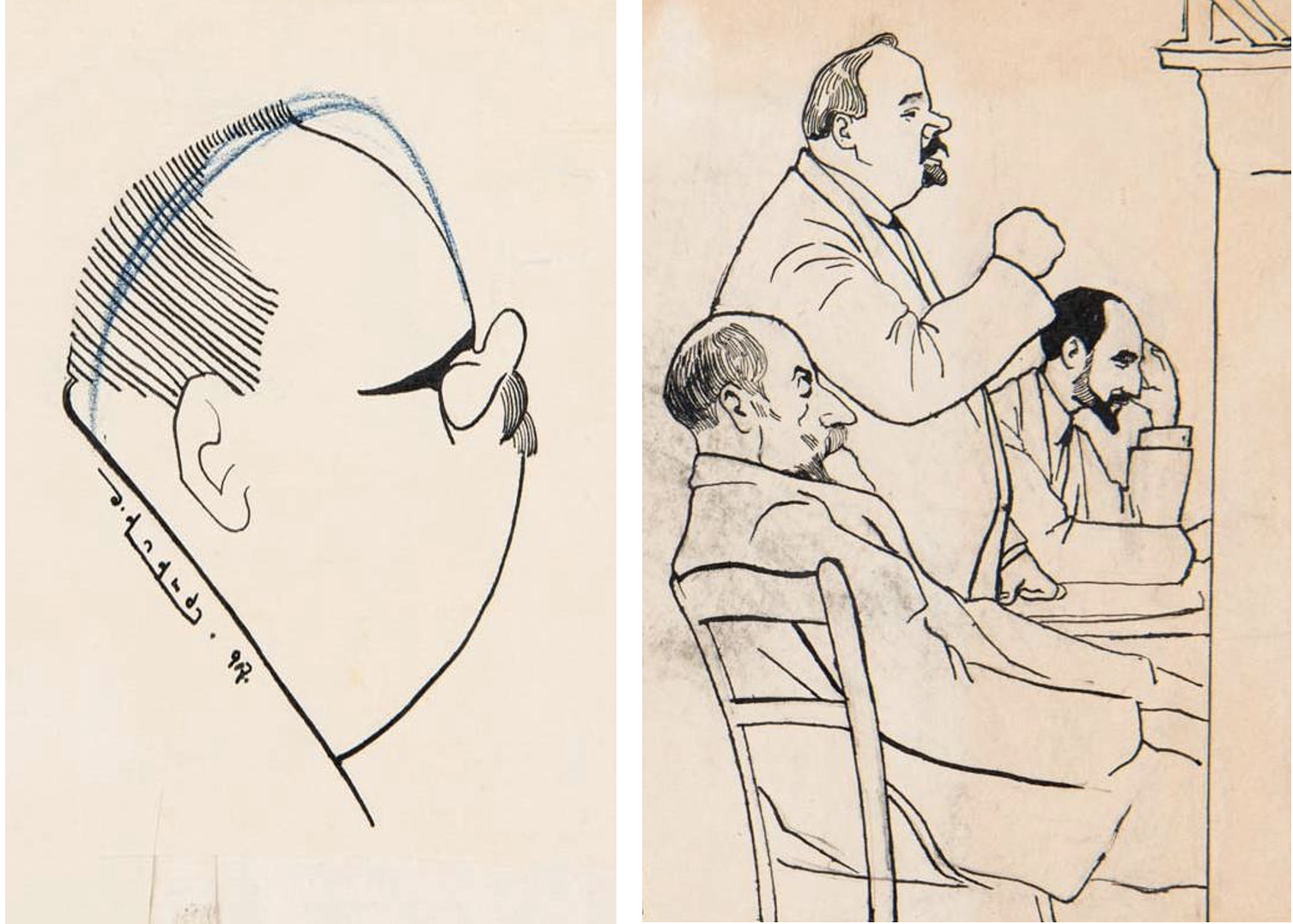
Shalva Kikodze. Akaki Chkhenkeli, Amicable Gesture. 8x5. Drawing ink on paper. 1917. Georgian National Museum
Shalva Kikodze. Constitutional Assembly: Noe Zhordania, Akaki Chkhenkeli (speaker), Noe Ramishvili. 18x12. Drawing ink on paper. 1919

Shalva Kikodze. Noe Zhordania, Amicable Gesture. 9x7. Drawing ink on paper. Georgian National Museum
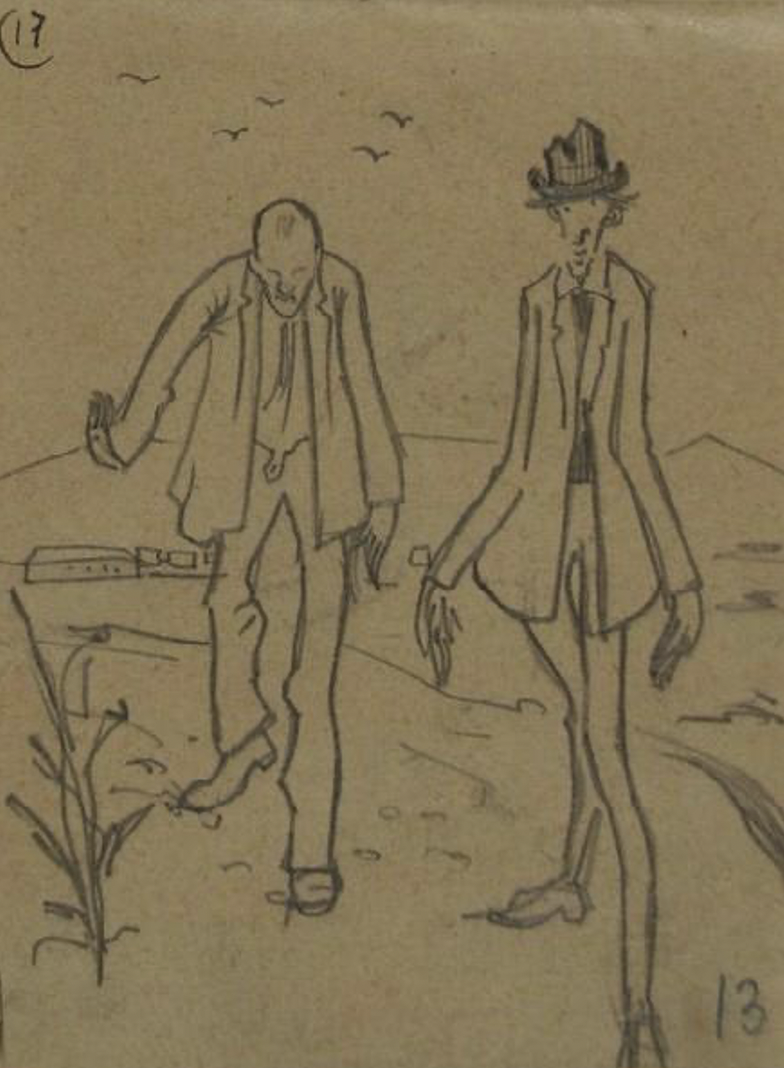
Shalva Kikodze. Geronti and Shalva Kikodze, Amicable Gesture. 9x7. Drawing ink on paper. 1919
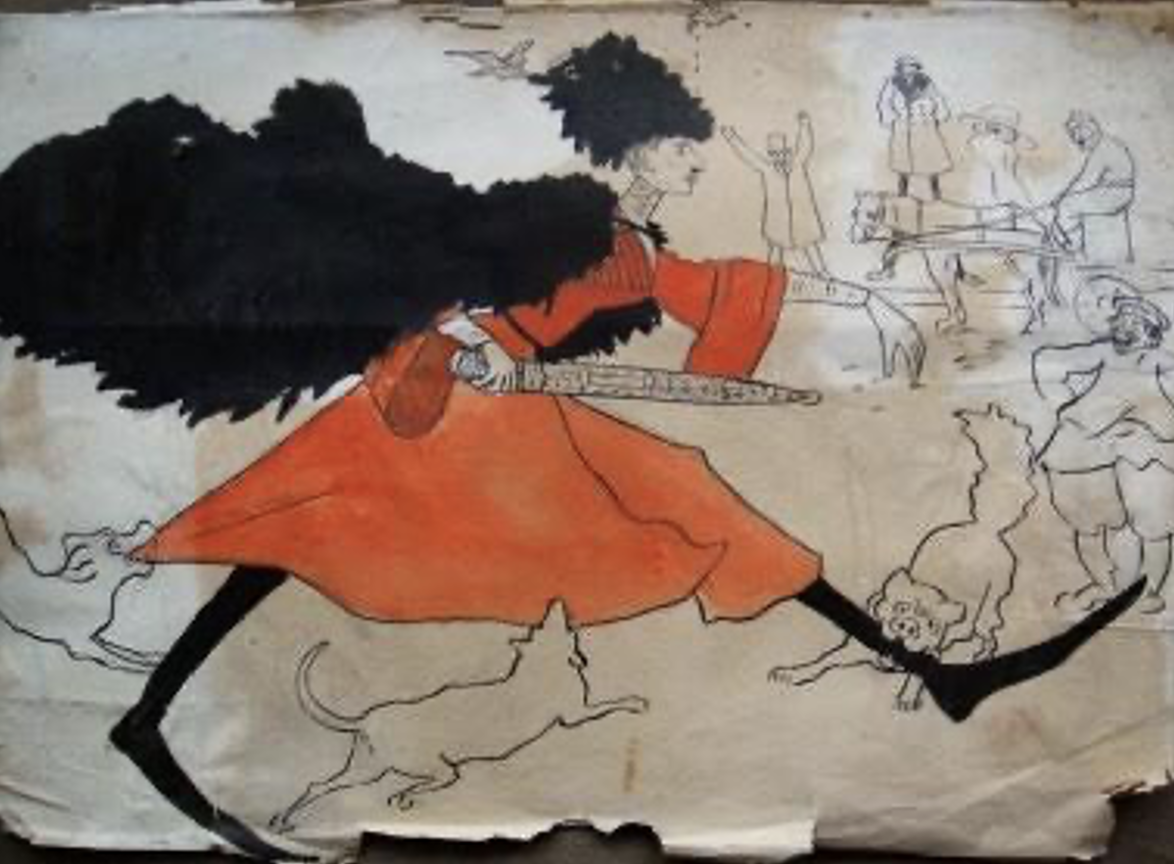
Shalva Kikodze. Konstantine Gamsakhurdia, Amicable Gesture. 23x30. Drawing ink and watercolor on paper. 1917. Georgian National Museum

The artist's work on canvas, “Georgian Woman” also dates from the same period.
In 1918, the artist collaborated with the Giorgi Jabadari Theater-Studio. He created artistic decorations for several plays staged by G. Jabadari: E. Brie’s “Religion,” D. Jacos’ “Like Leaves,” and E. Rostand's “White Dinner,” among others. Unfortunately, the études have not survived, but the graphic sketches and amicable jests that he produced are still preserved.

Shalva Kikodze. Veriko Anjaparidze. 34x30. Pencil, drawing ink on paper. 1917. Georgian National Museum
Shalva Kikodze. Zeinabi - Alisa Kikodze, Isakhari - Babo Gamrekeli, A. Sumbatashvili's "Betrayal". 25 x 18. Drawing ink on paper. Georgian National Museum
With financial support from the government of independent Georgia and the efforts of the "Georgian Society of Artists," along with David Kakabadze and Lado Gudiashvili, Shalva Kikodze traveled to France in the first stream of grant-aided art students for the purpose of professional development.

Shalva Kikodze and David Kakabadze, in Shalva's Studio in Paris, 1920, photograph
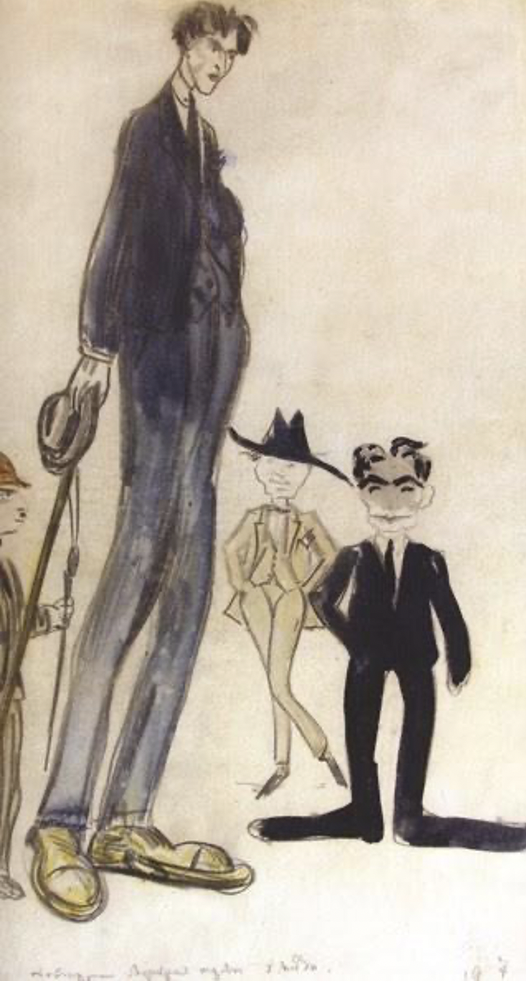
Shalva Kikodze. "Family of Georgian artists in Paris" (D. Kakabadze, Sh. Kikodze, V. Kushitashvili, and L. Gudiashvili). 30x20. Pencil and watercolor on paper. 1921. Private collection

Lado Gudiashvili. Shalva Kikodze’s Portrait. 28.5x21.5. Pencil on paper. 1920. Private collection
The artist continued to be actively creative in Paris, where he produced outstanding paintings and graphic illustrations. These works were exhibited alongside paintings by Lado Gudiashvili and Davit Kakabadze at “Galerie La Licorne” and the “Salon des Indépendants.”

Shalva Kikodze. Parisian Sketch. 22.5x14.5. Drawing ink on paper. 1920. Georgian National Museum

Shalva Kikodze. Nude. 28x21. Pencil on paper. 1920. Georgian National Museum
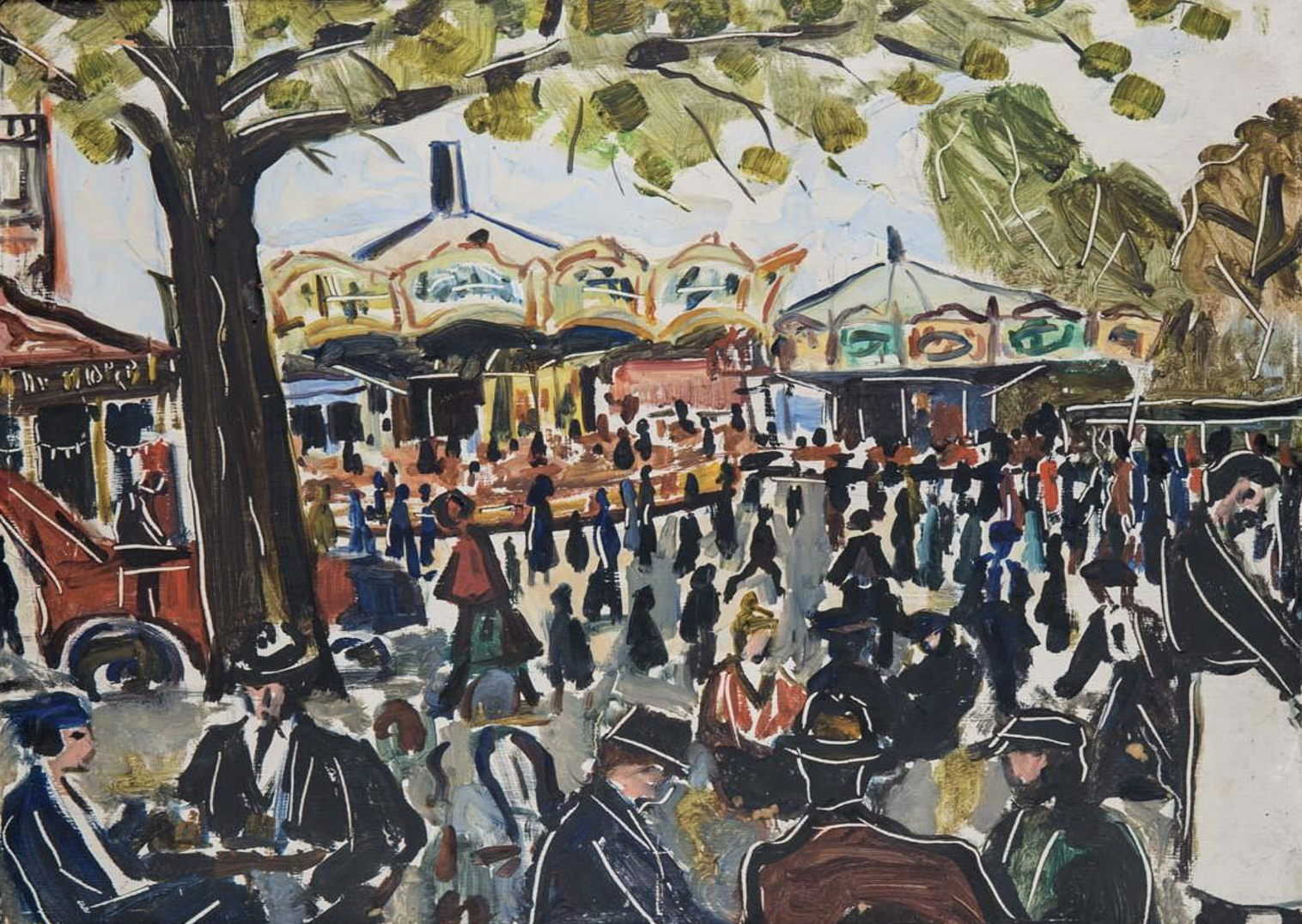
Shalva Kikodze. Paris, Carousel. 33x41. Oil on cardboard. 1920. Georgian National Museum

Shalva Kikodze. Paris. 30x40. Oil on cardboard. 1920. Georgian National Museum

Shalva Kikodze. Eiffel Tower. 31x41. Oil on cardboard. 1920. Georgian National Museum

Shalva Kikodze - Boats on the Seine, 1920, oil on cardboard, 33 x 41 cm, Georgian National Museum

Shalva Kikodze - Paris, Boats on the Seine, 1920, oil on cardboard, 33 x 41 cm, Georgian National Museum
It is worth noting that, upon recommendation of the theater director Vaso Kushitashvili, the artist undertook several significant commissions in Paris, associated with renowned French theaters such as “L’Odéon,” “L’Atelier,” and “Le Théâtre du Vieux-Colombier.” Unfortunately, the nature and specifics of these scenographic commissions and their whereabouts are not known.
Shalva Kikodze’s creative oeuvre vividly demonstrates that Georgian modernism of the 1920s represents one of the more interesting branches of European modernism. In the artist’s cubist work “Paris,” apart from the geometric elements that are typical of Analytical Cubism, there emerges a sense of existential alienation that the artist experienced in an unfamiliar urban environment. This poignant solitude is further accentuated by Kikodze’s critical evaluation of Parisian existence, vividly expressed in the paintings “In the Café” and “Luxembourg Garden.”

Shalva Kikodze - Self-Caricature “Mr. Me,” 1920, drawing ink on paper, 18 x 13 cm, Georgian National Museum

Shalva Kikodze - Mask, 1921, oil on canvas, 55 x 44 cm, Georgian National Museum

Shalva Kikodze - Café of Artists in Paris, 1920, oil on canvas, 52 x 46 cm, Georgian National Museum

Shalva Kikodze - Luxembourg Garden, 1920, oil on canvas, 108 x 104 cm, Georgian National Museum
Shalva Kikodze's works from his Parisian period intriguingly exhibit a characteristic tendency of modernism, as manifested in the vision of neo-primitivism, which is notably evident in the pictorial series “From the Life of Puppets.” In these intentionally simplified artistic forms, the artist conveys sincere human emotions through the artificial realm of toys See, for example “The First Meeting,” “The Kiss,” and “The Wedding”.

Shalva Kikodze. The First Meeting, from the series “Life of Puppets,” 1920, oil on canvas, 56 x 46.5 cm, Georgian National Museum
Shalva Kikodze - Kissing, from the series “Life of Puppets,” 1920, oil on canvas, 54 x 46 cm, Georgian National Museum
Shalva Kikodze - The Wedding, from the series “Life of Puppets,” 1920, oil on canvas, 54 x 46 cm, Georgian National Museum
“I don't know of any philosophy greater than painting,” Shalva Kikodze wrote in one of his letters from France to his sister back in his homeland. Upon retrospectively examining his creative oeuvre, there is no doubt regarding the profound philosophical depth and tremendous sense of responsibility with which the young artist approached the creation of every one of his artworks. In the compositional schemes of the canvases “Three Artists” and “In the Restaurant,” the artist actively featured portraits of the grant-supported art students in Paris: David Kakabadze, Lado Gudiashili, and himself. In both instances, the artists are surrounded by depictions of naked or semi-naked "nudes." These works vividly reveal Shalva Kikodze's interesting creative interpretations of the philosophical writings of Friedrich Nietzsche and Sigmund Freud. They are based on the identification of binary oppositions within the human unconscious, exemplified by the Apollonian-Dionysian theme in “Three Artists,” and the Eros-Thanatos dynamic of “In the Restaurant.”
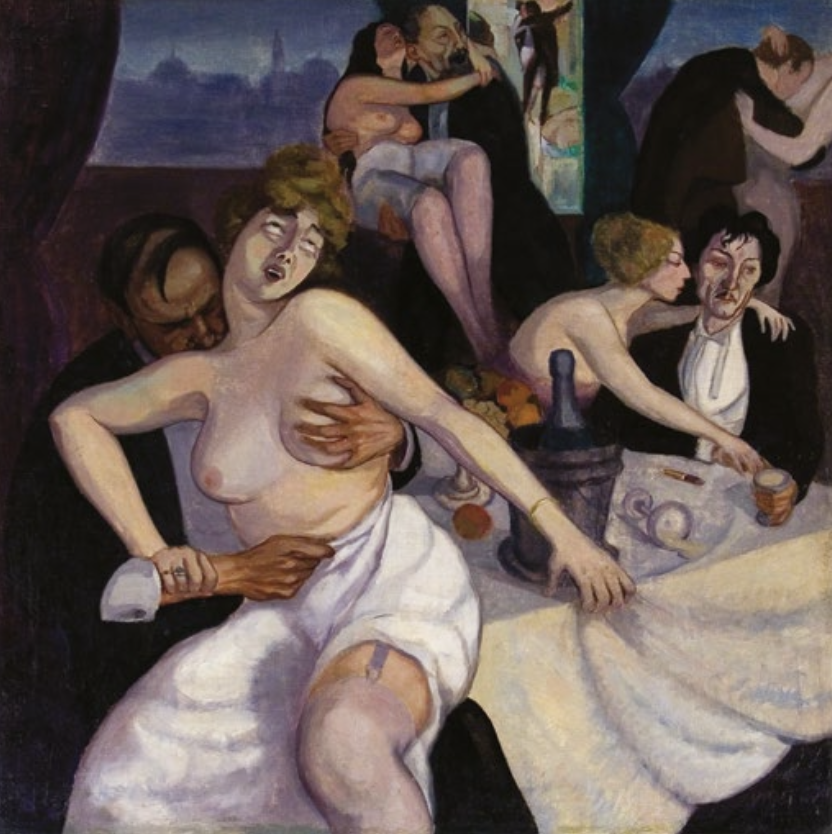
Shalva Kikodze - Town, 1920, oil on canvas, 88 x 88 cm, Georgian National Museum

Shalva Kikodze. Three Artists. 96 x 101. Oil on canvas. 1920. Georgian National Museum
In 1920, Shalva Kikodze wrote to his sister, the actress Aneta Kikodze: “...every art, every nation is created within a national framework. Only the form that emerges within the national scope is awarded international importance.” As testament to his dedication to these words, the artist produced a series of paintings in Paris, in which he imaginatively portrayed various regions of Georgia: “Guria,” “Gurian Woman,” “Boy and Girl,” “Khevsureti,” “Celebration,” and “Adjara.”

Shalva Kikodze. Guria. 88x73. Oil on canvas. 1921. Georgian National Museum
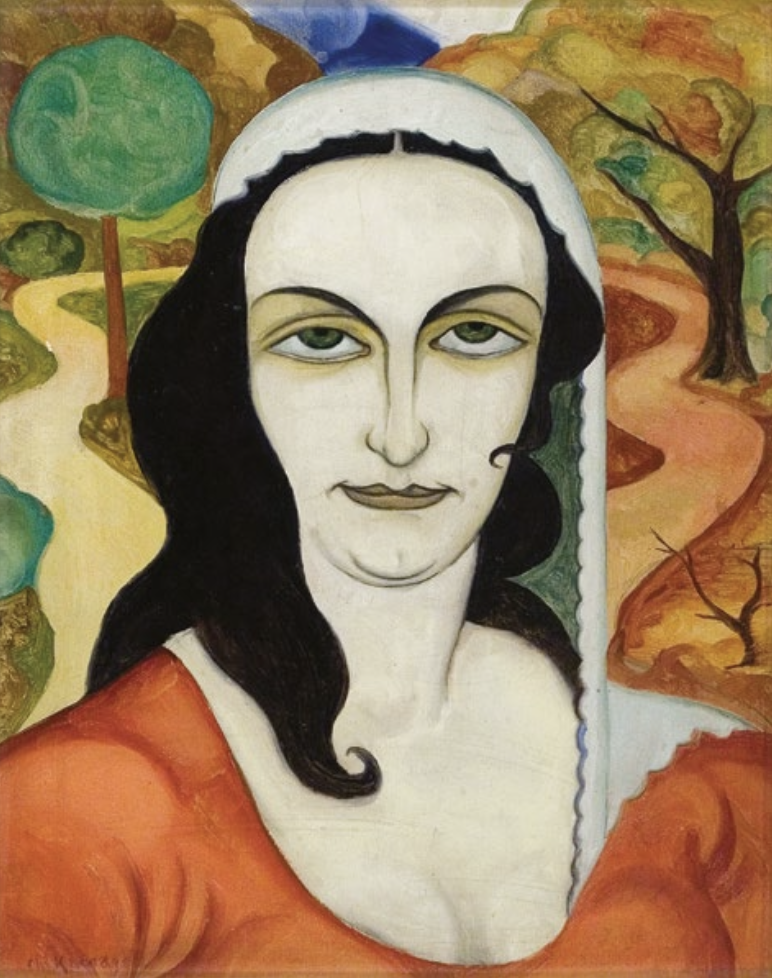
Shalva Kikodze. Gurian Woman. 41x33. Oil on cardboard. 1921. Georgian National Museum

Shalva Kikodze. Khevsureti. 200x158. Oil on canvas. 1920. Georgian National Museum

Shalva Kikodze. Celebration (Bacchus). 88x88. Oil on canvas. 1920. Georgian National Museum
Aside from the nostalgic quality of these pieces, it is evident that a search is under way for a national artistic expression that follows the artistic innovations of the 1920s generation (David Kakabadze, Lado Gudiashvili, Elene Akhvlediani, and Ketevan Goliashvili, among others) as a primary line of inquiry. This resulted in the fusion of national medieval monumental and decorative arts with the innovative vision of European modernism. It is noteworthy that in Shalva Kikodze's works that were inspired by memories of the regions of Georgia - initiated in his homeland and later culminating in Paris - one can discern not only individual techniques reminiscent of German expressionism, characterized by exaggeration and distortion, but also traditional mythologems (embodied in the form of national archetypal representations) rooted in Carl Jung's collective unconscious (“Guria,” “Gurian Woman,” “Boy and Girl”). Artistic interpretation of the philosophy of Henri Bergson, a philosopher esteemed as a prominent figure in European modernism, is evident in Shalva Kikodze's distinctive painting “Adjara.” In this work, the enigmatic eyes of two Adjarian women, veiled in chadors, peer through a swirling phantasmagoria of various colors. Shalva Kikodze's creative intuition, entwined in this cyclical depiction, appears to transcend temporal barriers, forging a link between the past and its contemporaneous present.

Shalva Kikodze. Adjara. 55x46. Oil on canvas. 1921. Georgian National Museum
“I am interested in my second nature, which occasionally reveals itself. I hold a greater affection for it: the second nature,” Shalva Kikodze wrote to his sister from Paris in 1921. The remarkably unique self-portrait by the artist, entitled "In Memory of an Untimely Lost Friend," dates from this period. In the picture, with the keen intuition characteristic of a true creator, Shalva Kikodze seemed to foresee his own imminent demise. By portraying himself on the deck of a ship together with strange companions —Mephistopheles and a skeleton with a daisy placed on his heart, symbolizing tuberculosis – Shalva Kikodze appears to have accomplished the “mystery of otherness” as recounted by Grigol Robakidze in his commentary on Georgian modernism.

Shalva Kikodze. In Memory of an Untimely Lost Friend. 96x101. Oil on canvas. 1920. Georgian National Museum
In November 1921, Shalva Kikodze departed for Germany, with the aim of visiting other European countries before returning to his homeland. Fate, however, had other plans for the artist. During his journey to Germany, the artist fell ill with a disease that was incurable at that time – tuberculosis, which unfortunately proved to be fatal for the young artist. He was buried in Freiburg cemetery. Shalva Kikodze's inheritance was returned from Paris to his homeland thanks to the efforts of David Kakabadze, the artist's cousin Bidzina Ramishvili, and his father Gerasime Kikodze.
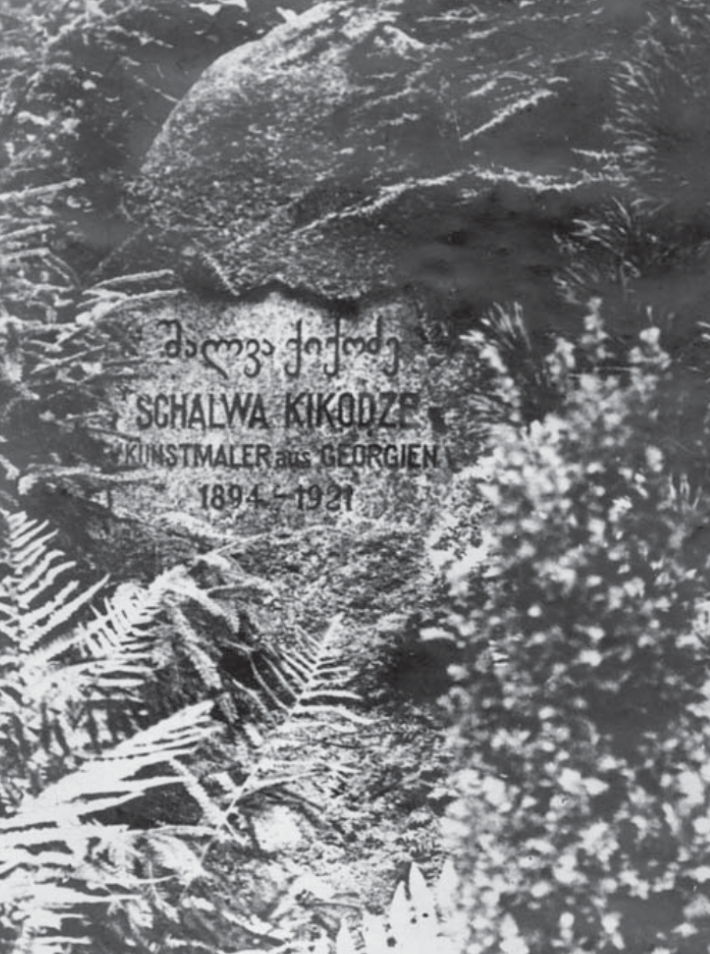
Shalva Kikodze’s gravestone: Freiburg, Germany
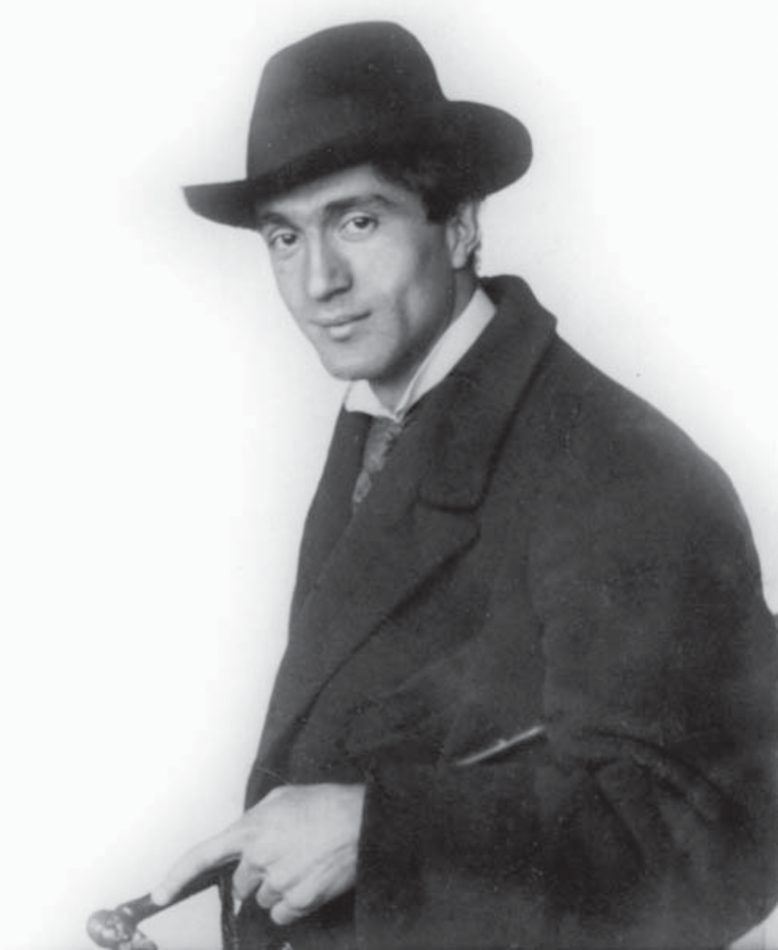
Shalva Kikodze, 1919, photograph
“...Only time can acknowledge an artist,” Shalva Kikodze wrote in one of the missives that he sent to his homeland. Today, we can confidently affirm that Shalva Kikodze's creative work has successfully withstood the test of time .